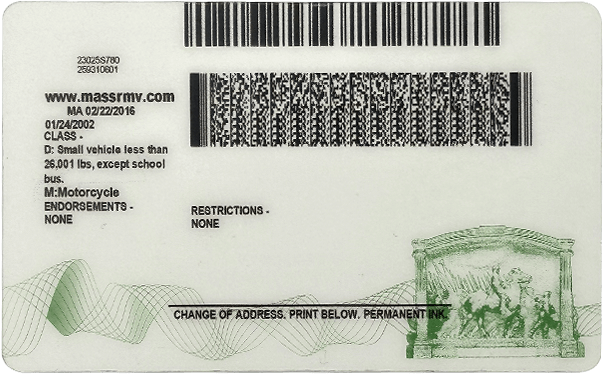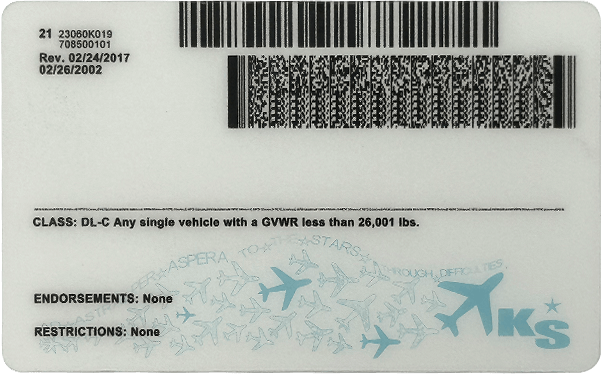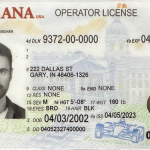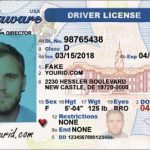When a customer walks into a car dealership with the intention of purchasing or leasing a vehicle, one of the first steps in the process often involves the dealership checking the customer’s driver’s license. This is a crucial part of the overall transaction – it serves multiple purposes and is carried out through a series of well – defined procedures.
Reasons for Checking Driver’s Licenses
First and foremost, car dealerships need to verify the identity of the customer. A driver’s license is a government – issued identification document that contains key personal information such as the customer’s full name, date of birth, address, and a photograph. By checking the driver’s license, dealerships can ensure that the person they are dealing with is who they claim to be. This helps prevent fraud and identity theft, which are serious concerns in the automotive sales industry.
Secondly, the driver’s license provides information about the customer’s driving status. Dealerships may want to know if the customer has a valid license, as this is an indication that the individual is legally allowed to drive the vehicle they are interested in purchasing or leasing. A valid license also implies that the customer has met the basic requirements set by the local Department of Motor Vehicles (DMV) to operate a motor vehicle.

Another reason is related to insurance and financing. Insurance companies typically require the named driver to have a valid license when issuing a policy for a new vehicle. Similarly, financial institutions that provide auto loans or leases may also consider the customer’s driving status as part of their underwriting process. A driver with a poor driving record or a suspended license may pose a higher risk, which could affect the terms of the loan or lease, or even lead to a denial of credit.
Initial Visual Inspection
The first step in the dealership’s driver’s license check is usually a visual inspection. A salesperson or a finance representative will carefully examine the license for any obvious signs of tampering or forgery. They will look at the overall quality of the document – the paper, the printing, and the holograms. Legitimate driver’s licenses have specific security features such as holographic images, microprinting, and UV – sensitive inks. If any of these features seem off or if there are visible signs of alteration, such as scratches or smudges in areas where they shouldn’t be, the dealership will be cautious and may take further steps to verify the license’s authenticity.

During the visual inspection, the dealership staff will also compare the photograph on the license with the person standing in front of them. This is a simple but effective way to confirm that the customer is the same person whose name is on the license. They will look at facial features, hair color, and any distinguishing marks or tattoos that are visible in the photograph and on the customer.
The expiration date of the license is also closely examined. A valid license must be within its expiration period. If the license has expired, the dealership may ask the customer to renew it before proceeding with the vehicle transaction. In some cases, if the expiration is recent and the customer can provide a reasonable explanation for the delay in renewal, the dealership may still consider the customer on a case – by – case basis, but this is at their discretion.
Verification with the DMV
In addition to the visual inspection, many car dealerships will also verify the driver’s license information with the local DMV. This can be done through various means. Some dealerships have direct access to electronic databases maintained by the DMV, which allows them to quickly and accurately check the license’s status. They can input the license number, the customer’s name, and other relevant details into the system and receive instant feedback on whether the license is valid, if there are any suspensions or restrictions associated with it, and the customer’s driving history.
Other dealerships may use third – party verification services. These services act as intermediaries between the dealership and the DMV. The dealership provides the necessary information about the customer’s driver’s license to the third – party service, which then makes the request to the DMV on behalf of the dealership. The third – party service will then relay the results back to the dealership. While this may take a bit longer than direct access to the DMV database, it is still a reliable way to obtain accurate information.
The DMV verification process not only confirms the basic details on the license but also reveals any additional information that may be relevant to the dealership. For example, it can show if the customer has a history of traffic violations, accidents, or if they have had their license revoked or suspended in the past. This information can be used by the dealership to assess the customer’s risk profile and to make decisions regarding the vehicle sale or lease.
Document Scanning and Record – Keeping
Once the driver’s license has been visually inspected and verified with the DMV (if necessary), many car dealerships will scan the license into their electronic records system. This serves several purposes. Firstly, it creates a digital copy of the license that can be easily accessed and referenced in the future. In case of any disputes or questions regarding the customer’s identity or driving status during the course of the vehicle ownership or lease period, the dealership can quickly retrieve the scanned copy of the license.
Secondly, the scanned license is often part of the overall customer file that the dealership maintains for compliance and auditing purposes. Regulatory authorities may require dealerships to keep records of customer identification documents for a certain period of time. By scanning the license, the dealership can ensure that they are in compliance with these regulations and can easily produce the necessary documentation if requested.
When scanning the license, dealerships take care to ensure that the quality of the scan is high. This means that all the information on the license, including the text, the photograph, and the security features, is clearly visible in the digital copy. Some dealerships may also use optical character recognition (OCR) technology to extract the text information from the scanned license and populate it into their customer database automatically, reducing the chances of manual data entry errors.
Common Problems and Solutions
-
License Appears Tampered With
Problem: During the visual inspection, the dealership staff notices signs that the driver’s license may have been tampered with, such as uneven edges, smudged printing, or suspicious – looking alterations to the information on the license.
Solution: The dealership should immediately stop the transaction and notify the customer of their concerns. They can ask the customer to provide an explanation for the appearance of the license. If the customer cannot provide a satisfactory explanation, the dealership may choose to contact the local law enforcement or the DMV to report the suspected tampering. In some cases, if the customer has a valid replacement license or can quickly obtain one from the DMV, the dealership may consider resuming the transaction once the new, legitimate license has been verified.
-
DMV Verification Fails
Problem: When the dealership attempts to verify the driver’s license with the DMV, the system returns an error message or indicates that the license information does not match the records on file.
Solution: The dealership should first double – check the information they entered into the verification system to ensure that there were no data entry errors. If the information is correct, they should contact the customer and inform them of the issue. The customer may need to contact the DMV directly to resolve any discrepancies in their records. This could be due to a recent name change, address update, or a system error on the DMV’s part. Once the customer has resolved the issue with the DMV and the dealership is able to successfully verify the license, the transaction can proceed.
-
Expired License
Problem: The driver’s license presented by the customer has already expired, and the customer has not yet renewed it.
Solution: The dealership should inform the customer that they need to renew their license before proceeding with the vehicle transaction. They can provide the customer with information on how to renew the license, such as the required documents, the renewal process, and the location of the nearest DMV office. In some cases, if the customer has a valid reason for the delay in renewal (e.g., a medical condition that prevented them from going to the DMV), the dealership may be willing to wait for a short period while the customer renews the license. However, if the customer is unable or unwilling to renew the license in a timely manner, the dealership may have to halt the transaction until the license is valid again.
-
Incomplete or Inaccurate Information on the License
Problem: The driver’s license has missing or incorrect information, such as a misspelled name, an old address, or an incorrect date of birth.
Solution: The dealership should ask the customer to clarify the information. If the errors are minor and can be easily corrected by the customer providing additional documentation (such as a birth certificate for a date – of – birth correction or a utility bill for an address update), the dealership can request the necessary documents. Once the customer has provided the correct information and supporting documentation, the dealership can proceed with the verification process. If the errors are more significant or if the customer cannot provide the necessary documentation, the dealership may need to contact the DMV to determine the best course of action, which could involve the customer having to correct the license with the DMV before the transaction can continue.
-
Customer Refuses to Provide the Driver’s License
Problem: The customer is hesitant or refuses to provide their driver’s license to the dealership for inspection and verification.
Solution: The dealership should explain to the customer the importance of providing the driver’s license. They can inform the customer that it is a standard procedure to verify identity, driving status, and for insurance and financing purposes. If the customer still refuses, the dealership may have to determine if they are willing to proceed with the transaction under these circumstances. In most cases, without a valid driver’s license check, the dealership may be unable to complete the sale or lease of the vehicle, as it poses significant risks to the dealership in terms of legal compliance, fraud prevention, and dealing with insurance and financing partners. The dealership may need to be firm but polite in communicating this to the customer and may offer alternative solutions if available, such as allowing the customer to provide a different form of government – issued identification along with additional proof of driving status (if applicable), although this is not always a viable option depending on the dealership’s policies and the requirements of its partners.
Fake ID Pricing
unit price: $109
| Order Quantity | Price Per Card |
|---|---|
| 2-3 | $89 |
| 4-9 | $69 |
| 10+ | $66 |



